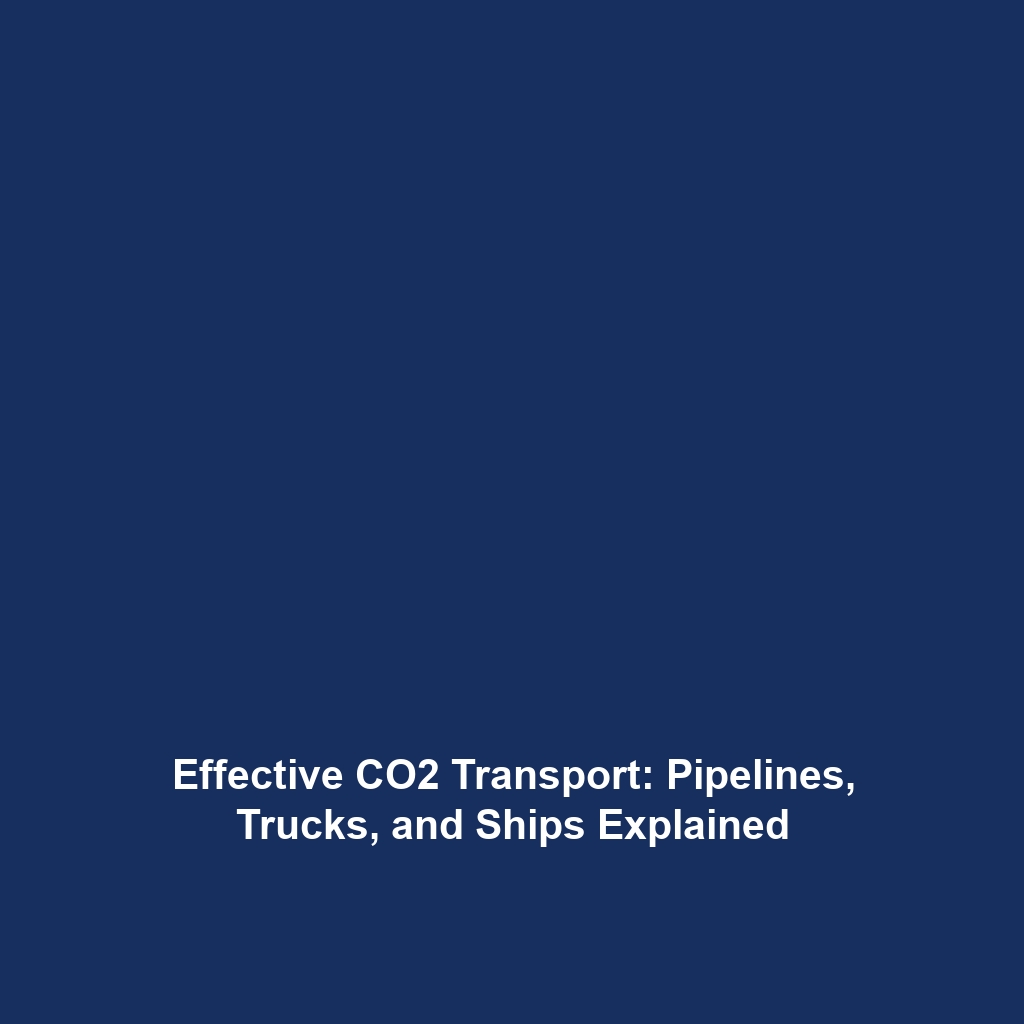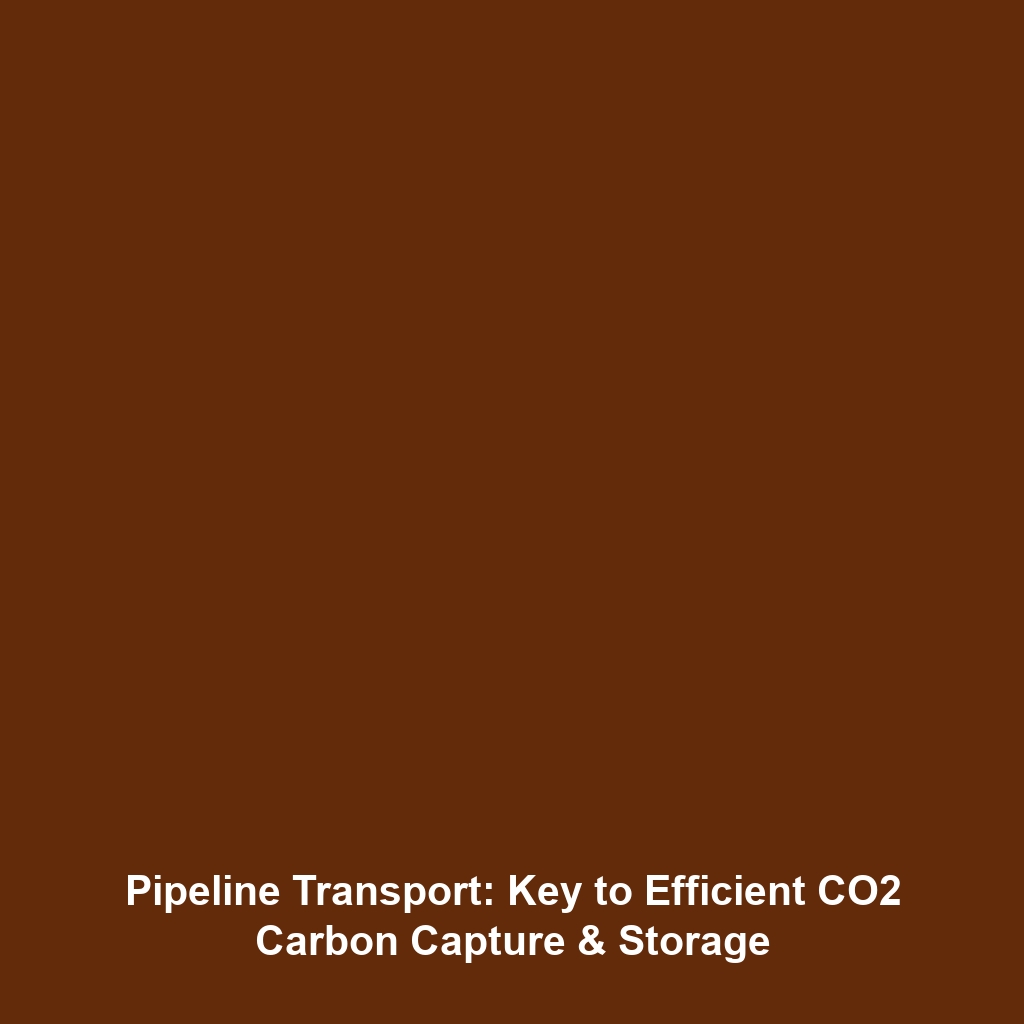Transport of Captured CO2 in Carbon Capture & Storage (CCS)
Introduction
Transport plays a crucial role in Carbon Capture and Storage (CCS) by moving CO2 from its capture site to storage locations. Once carbon dioxide is captured from industrial processes, whether from power plants or manufacturing facilities, the next step is to transport this greenhouse gas safely and efficiently to prevent its release into the atmosphere. The methods used for this transport—pipelines, trucks, or ships—are not only vital for effective CCS implementation but also significantly influence its economic viability and environmental impact. Understanding these transport methodologies is essential for advancing CCS technologies and addressing climate change.
Key Concepts
The transport of CO2 involves several key concepts and principles that fit well within the wider context of Carbon Capture & Storage (CCS).
Transport Methods
- Pipelines: The most common method, allowing for large volumes of CO2 to be transported over long distances.
- Trucks: Used for shorter distances or in regions lacking pipeline infrastructure.
- Ships: Facilitate international transport, particularly to offshore storage sites.
Safety and Regulations
Transporting CO2 safely is pivotal. Regulatory frameworks ensure that these transport methods comply with safety protocols to mitigate risks associated with leaks or accidents.
Applications and Real-World Uses
The transport of captured CO2 has significant real-world applications, particularly in the following areas:
- Enhanced Oil Recovery (EOR): CO2 is injected into depleted oil fields to extract remaining oil while permanently storing the CO2 underground.
- Storage Sites: Transport systems connect to geological formations designated for long-term CO2 storage, including saline aquifers and depleted gas fields.
Understanding how CO2 transport is used in CCS emphasizes its role in mitigating climate change.
Current Challenges
Despite the critical role of transport in CCS, several challenges and limitations exist:
- Infrastructure Costs: Developing the necessary infrastructure for CO2 transport can be prohibitively expensive.
- Regulatory Hurdles: Navigating through regulations can delay project implementation.
- Public Acceptance: Concerns regarding safety impact public perception and support of CO2 transport projects.
These challenges of CO2 transport need to be addressed to enhance the effectiveness of CCS.
Future Research and Innovations
Research is ongoing to innovate and improve CO2 transport methods, including:
- Advanced Pipeline Materials: Research into materials that can withstand higher pressures and temperatures could enhance pipeline safety and efficiency.
- New Compression Techniques: Innovations aimed at reducing the energy cost of compressing CO2 for transport.
- Integrated Transport Systems: Developing smart systems that optimize transport routes and methods based on real-time data.
These future innovations hold promise for improving the impact of Transport in Carbon Capture & Storage.
Conclusion
In summary, the transport of CO2, once captured, is a critical component of the Carbon Capture & Storage (CCS) framework. Addressing the challenges and capitalizing on future innovations will be essential to enhance the effectiveness of CCS in mitigating climate change. As the need for sustainable practices grows, continued research, investment, and public engagement will shape the future of CO2 transport. For more information on related topics, explore our pages on CCS technology and Global initiatives in carbon capture.

